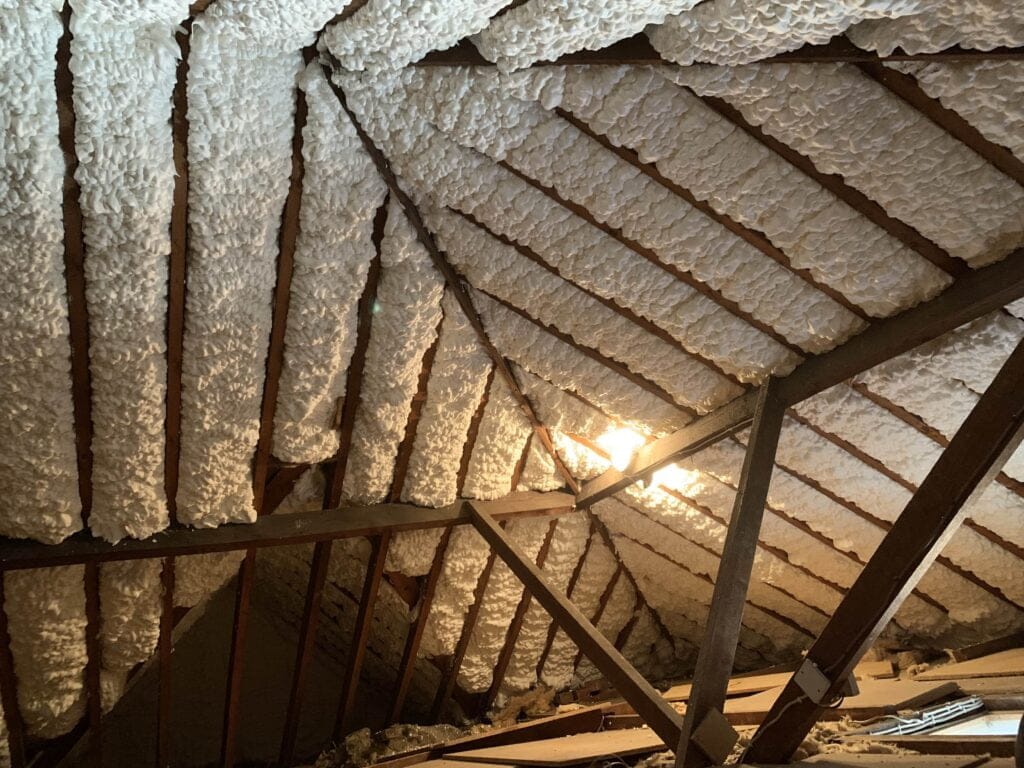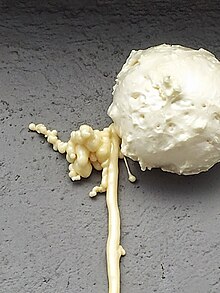Spray Foam: The Ultimate Remedy for Air Sealing and Insulation
Spray foam insulation has actually arised as a leading remedy for effective air sealing and thermal insulation, providing an unique mix of properties that establish it apart from standard methods. Understanding the complete scope of its benefits, installment processes, and contrasts with other insulation types is critical for making informed decisions.
What Is Spray Foam?
Spray foam is a versatile insulation product that incorporates the principles of air securing and thermal resistance to enhance power efficiency in buildings. Made up mostly of polyurethane or various other similar substances, spray foam is used as a liquid that expands upon call with surface areas, creating a strong, constant layer of insulation. This distinct home enables it to fill up voids, cracks, and voids that traditional insulation products might neglect, offering a premium air seal.
There are two primary sorts of spray foam: open-cell and closed-cell. Open-cell spray foam is lighter and extra flexible, using excellent audio absorption and a reduced R-value per inch - Spray Foam. In comparison, closed-cell spray foam is denser, supplying a higher R-value, moisture resistance, and included structural honesty to building parts
The application process typically includes specialized equipment, making certain a smooth application that abides by different substratums, consisting of timber, steel, and concrete. This flexibility makes spray foam appropriate for both brand-new building and constructions and retrofitting existing structures. Its ability to develop a closed barrier substantially adds to lowering energy intake and enhancing interior air high quality, therefore making it a favored choice amongst home builders and house owners alike.
Benefits of Spray Foam Insulation
One of one of the most considerable advantages of spray foam insulation is its remarkable capability to produce a continuous air obstacle, which effectively lessens energy loss. Unlike typical insulation materials, spray foam expands to fill up splits and gaps, making sure that air leakage is significantly decreased. This particular not just boosts energy effectiveness yet additionally leads to decrease energy costs over time.
Furthermore, spray foam insulation offers superior thermal resistance, adding to a much more steady indoor setting. Its high R-value per inch enables reliable insulation in restricted areas, making it excellent for attics, walls, and crawl rooms. Additionally, the moisture-resistant homes of spray foam help prevent mold and mildew development, advertising healthier living conditions.
An additional important benefit of spray foam insulation is its sound-dampening qualities (Spray Foam). It successfully lowers noise transmission between areas, developing a quieter and extra comfy home environment. The longevity of spray foam additionally sticks out, as it does not sag or resolve with time, maintaining its performance throughout its life expectancy
Exactly How Spray Foam Functions
Understanding exactly how spray foam insulation functions is essential for appreciating its performance in air securing and thermal resistance. Spray foam insulation includes 2 main components: isocyanate and polyol material. When these parts are blended, they undertake a chemical reaction that causes the product to increase swiftly, creating a thick foam that loads gaps, dental caries, and fractures.
As the foam increases, it adheres to surface areas, creating a closed seal that considerably lowers air infiltration. This characteristic makes spray foam insulation very effective at stopping drafts and moisture infiltration, which can see post cause energy loss and damage in time. In addition, the closed-cell variation of spray foam uses premium thermal resistance due to its inflexible structure, successfully minimizing warm transfer.
The distinct homes of spray foam allow it to satisfy irregular surface areas, making certain extensive protection and a smooth barrier. Consequently, spray foam insulation not only enhances power effectiveness yet likewise adds to boosted indoor air high quality by decreasing the build-up of contaminants and irritants. Ultimately, recognizing the auto mechanics behind spray foam highlights its duty as an exceptional choice for insulation and air sealing in both residential and commercial applications.
Setup Process Overview

Before setup, the area should be adequately cleaned up and prepped, ensuring that surfaces are complimentary from dirt, debris, and moisture. Because impurities can jeopardize bond and overall efficiency, this step is essential. Once the location is prepared, the application includes blending the 2 components of the spray foam, which expands upon call and fills gaps effectively.
Educated professionals ought to perform the setup, utilizing customized equipment to make sure consistent protection and optimal thickness. Safety safety measures, including wearing safety gear and ensuring proper ventilation, are crucial during this process. After application, the foam generally cures swiftly, forming a solid barrier that boosts energy effectiveness.
Contrasting Spray Foam to Typical Insulation
When evaluating insulation choices, spray foam insulation stands out in contrast to standard materials such as fiberglass and cellulose. Unlike fiberglass and cellulose, which can allow air seepage, spray foam expands upon application, loading crevices and gaps to create an impermeable seal.
In addition, spray foam provides a greater R-value per inch than traditional insulation types, using more effective thermal resistance in a thinner profile. This characteristic is specifically beneficial precede with limited dental caries deepness. Spray foam is resistant to wetness and mold growth, which can be a substantial problem with cellulose and fiberglass, particularly in damp environments.
Nonetheless, spray foam insulation normally brings a greater upfront price than its traditional counterparts. Home owners need to weigh this initial financial investment why not try these out versus long-term power savings and efficiency advantages. Eventually, while both insulation kinds serve their purpose, spray foam arises as a more innovative remedy for modern insulation requirements, especially in regards to air sealing and thermal effectiveness.

Verdict
In recap, spray foam insulation stands for a very efficient service for achieving optimum air securing and thermal resistance. Its distinct homes, including dampness resistance and noise dampening, make it ideal for various applications in both new building and constructions and retrofitting projects (Spray Foam). Although the first prices may be higher compared to typical insulation products, the lasting advantages, such as substantial power financial savings and boosted indoor air high quality, justify the financial investment and emphasize its value in contemporary building techniques.
Spray foam insulation has actually arised as a leading service for reliable air sealing and thermal insulation, using a distinct mix of properties that set it apart from traditional approaches.Spray foam is a versatile insulation material that incorporates the concepts of air sealing and thermal resistance to enhance energy efficiency in buildings.When examining insulation options, spray foam insulation stands out in contrast to standard materials such as fiberglass and cellulose. Inevitably, while both insulation types offer their function, spray foam emerges as a much more advanced remedy for modern insulation requirements, particularly in terms of air sealing and thermal efficiency.
In recap, spray foam insulation represents a very effective service for accomplishing optimum air sealing and thermal resistance.